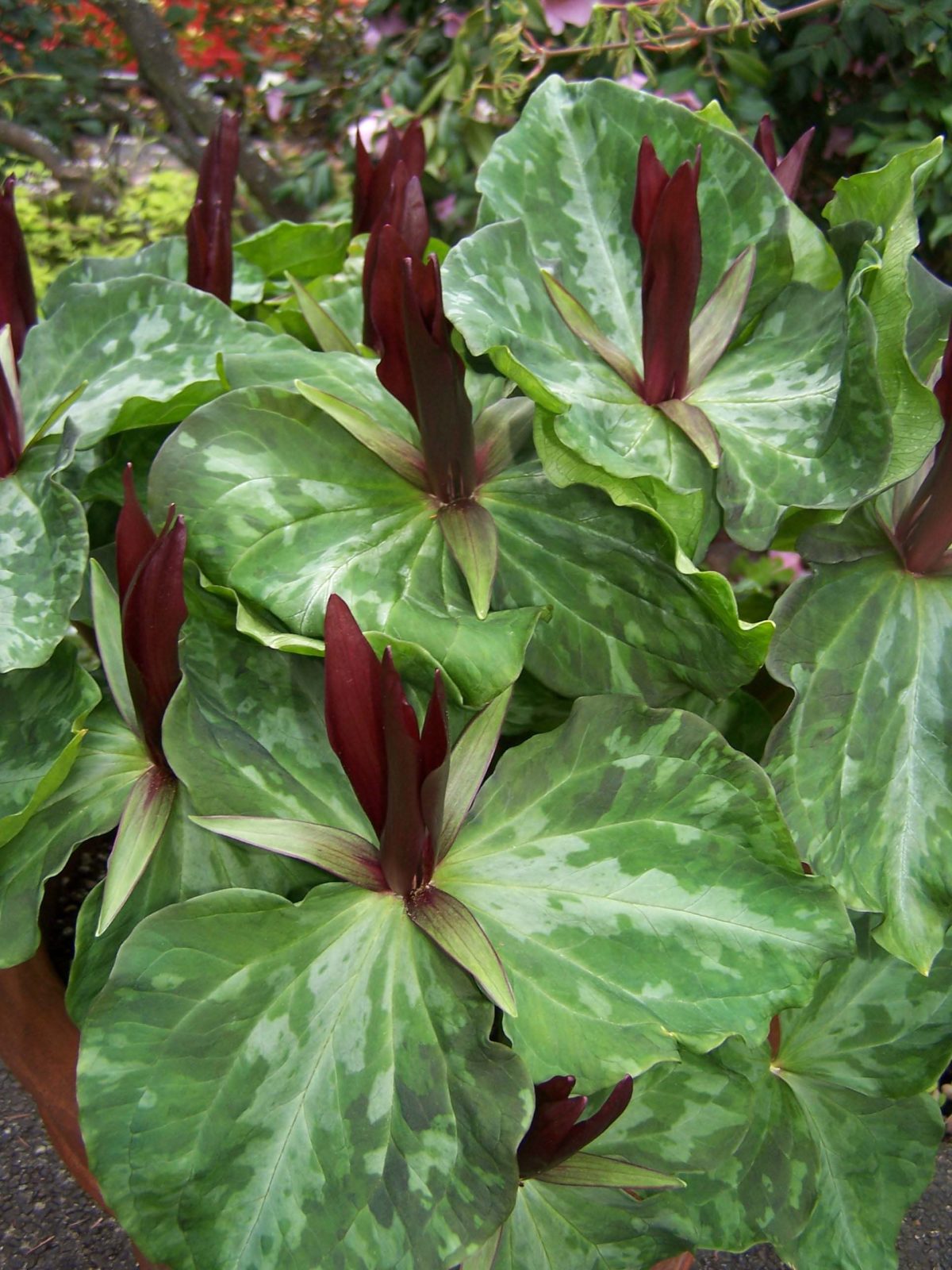Trillium: The March Across North America- Back Again Soon
Think of the trillium as the Johnny Appleseed of the ancient wildflower world, spreading seed and beauty as it meanders across prehistoric North America.
By Judy Broom, Director of the Dunn Gardens Docent Program
Think of the trillium as the Johnny Appleseed of the ancient wildflower world, spreading seed and beauty as it meanders across prehistoric North America. Or imagine the plant with its distinctive tri-petal blooms as the marching penguins of plant life, relentlessly traveling westward against all obstacles.
Those images came to mind when Susie Egan spoke to the Dunn Gardens docents of the historical and geographical distribution of the trillium, sometimes known by the common name of Wakerobin and, like the bird its named for, a sure sign of spring.
Egan cultivates a variety of woodland plants at Cottage Lake Gardens, her private nursery and garden near Woodinville, but she specializes in trillium. Her collection includes examples of all 50 or so known species. She shared trillium facts and lore with Dunn Gardens’ volunteers and docents last year before accompanying the group on an exploration of Dunn Gardens’ own collection of the iconic spring ephemeral, a dozen species in all.
Botanists believe the genus Trillium arose in the Appalachian Mountains, the oldest range on the continent, and made their way with the help of pollinating bees and ants across the land – evolving into myriad forms along the way. Upon reaching the west coast, at a time before the Rocky Mountains rose in geologic turbulence, the deceptively fragile-looking flower took a turn north, conquered the west coast of what would become Canada and made its way across a land bridge to Japan and Korea. Trillium are considered native only in North America and the nearest countries of the Far East.
In their westward migration and over eons, trillium have taken on diverse forms, always on the theme of three: three leaves, three petals, three sepals and reproductive parts in sets of three. They range in size from the Trillium nivale or Snow Trillium, a diminutive three inches tall, to several types that easily reach 18 inches. Flower color ranges from bright white to nearly black. In between one finds creamy ivory, yellow, green, lavender and deep red or burgundy. There is at least one bi-color species, the Eastern Seaboard’s stunning Trillium undulatum, or Painted Trillium, and many flowers have maroon or other vibrantly colored sex parts.
Particularly abundant in the Dunn Gardens is one of three Northwest natives, Trillium ovatum, beloved to hikers as well as home gardeners who cultivate woodland style landscapes. Like many trillium flowers that emerge white or light-colored, after pollination this species blushes to lavender and even deep purple.
In addition to striking flower display, trillium are appreciated for foliage which varies in shape and in many species includes distinctive mottled leaves. The foliage may disappear during drought in the wild without affecting the plant’s survival, but the leaves will persist into summertime in a watered garden.
The 50 recognized species are divided into two distinct types. The “pedicellar” variety bears its flower on a “pedicel,” or stalk, above the three-leaf cluster. Trillium ovatum is of this type. Another example of the pedicellar type is Trillium sulcatum, found at Dunn in its burgundy and pale yellow forms. The flower of the “sessile” form emerges directly from the union of three leaves without a stalk. Examples at Dunn of the sessile kind include the yellow Trillium luteum and Trillium chlorapetalum seen in hues from white to dark burgundy. Another sessile variety is Trilllium parviflorum, a state native, most common in the Pierce and Thurston Counties.
The third species of trillium considered native to Washington is found only east of the Cascades and is adapted to a warmer, drier climate. It is Trillium petiolatum, which has unusual rounded leaves, and bears bloom below them and low to the ground.
Here is a list of the species, most in bloom between March and May, at Dunn Gardens:
- Trillium albidum
- Trillium chlorapetalum
- Trillium cuneatum
- Trillium erectum
- Trillium grandiflorum
- Trillium kurabayashii
- Trillium luteum
- Trillium ovatum
- Trillium parviflorum
- Trillium pusillum
- Trillim sulcatum
- Trillium vaseyi
- Trillium rivale (reclassified as Pseudotrillium rivale)

